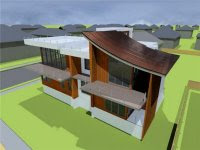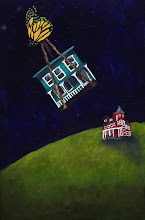Jackson helps lay out the plants before digging some impressive holes.
Tags are used to help educate the public about best plants to use on Long Island.
Landscape designer Sue Avery shows Liv how to space the plants.
Meanwhile, a local Boy Scout troop was rebuilding coup for the quail restoration project.
Quail getting ready to move into their new home.
Bouler Architecture is proud to support the native planting project at Seatuck, a nature preserve and education center in Islip, NY. Running along the Great South Bay, the preserve features a landscape that is a diverse mix of wetlands and woodlands, and is now developing a native planting scheme that will not only add beauty to the property, it will teach the public about what we should be planting in our Long Island yards. Jackson has been very interested in plants ever since he received a gardening book for attracting birds, so Olivia and I joined him by getting our hands dirty and planting some ferns, viburnum, mountain laurel, and blueberries under the direction of Seatuck's Chairperson of Landscaping, Sue Avery. Sue Avery, a biologist and landscape designer, has been working with fellow members of Seatuck and Long Island Native Plant Initiative to create a garden scheme that will enhance the landscape while restoring habitat. LINPI has been traveling to untouched areas across Long Island and harvesting plant seeds to cultivate new plants before the species is lost forever. The value of native plants is to not only preserve the species, however, but they work better in our climate, thriving without human intervention. They also help combat invasive plants. From bamboo to mustard garlic, invasive species choke out native plants and tamper with our ecosystem. Unfortunately, in the process they often choke out plants that provide food or habitat for wildlife. Seatuck's quail restoration project is another effort to restore the balance of our habitat. Having lost open space, their numbers in the wild have been depleted. Coupled with the desire to curtail the tick population, Seatuck began raising quail a few years ago, and the results have been phenomenal. As we rode our bikes home from our morning at Seatuck, I reflected on how lucky we are to be a stone's throw from such a beautiful spot.










No comments:
Post a Comment